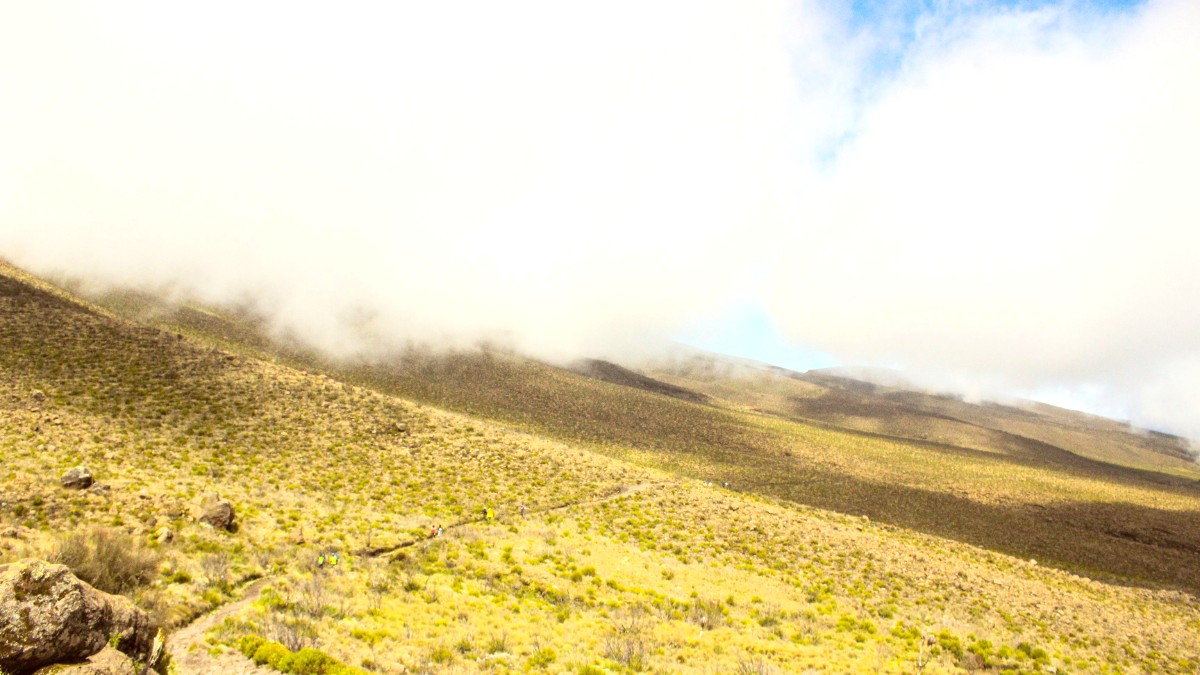
Tanzania
Mount Kilimanjaro (Uhuru Peak) is the highest freestanding mountain globally and Africa's highest peak. This inactive stratovolcano presents three distinct cones: Kibo (the highest, home to Uhuru Peak), Mawenzi, and Shira.
Sacred to the local Chagga people, Kilimanjaro has drawn explorers and climbers for over a century. Its glaciers are receding due to climate change, marking a significant environmental shift.
While Moshi has limited dedicated art galleries, Arusha presents more choices for art and cultural exhibitions, reflecting its larger urban setting.
Kilimanjaro National Park presents the mountain and its diverse ecosystems. Arusha National Park, near Arusha, features Mount Meru and the Momella Lakes.
Materuni Waterfalls, a beautiful waterfall near Moshi, is often combined with a coffee tour. Chemka/Kikuletwa Hot Springs offers a relaxing oasis for swimming.
Lower Kilimanjaro slopes have monkeys and birds. Major wildlife viewing occurs on multi-day safaris to parks like Serengeti and Ngorongoro.
Kilimanjaro's volcanic cones (Kibo, Mawenzi, Shira) and features like the Barranco Wall and The Saddle between Kibo and Mawenzi define its landscape.
Lake Chala, a stunning crater lake on the Kenya-Tanzania border, is a great spot for hiking and swimming.
Discover lesser-known spots and unique experiences for a more authentic journey.
Explore a Chagga village with a local guide to experience daily life beyond the usual tourist routes. This offers a genuine cultural perspective.
Savor authentic Tanzanian food at low prices in these establishments. They offer a taste of local flavors in a casual setting.
Beyond being a relaxation spot, this natural oasis provides a tranquil escape. It is a favorite among locals and less frequented by large tourist groups.
Witness stunning sunrise views of Kilimanjaro from Materuni village, a truly unique photo opportunity away from crowded viewpoints.
Explore the striking landscape of Lake Chala, a hidden crater lake with clear waters. It offers opportunities for quiet hikes and refreshing swims.
Capture the iconic "Kili Kiss" photo at Uhuru Peak, symbolizing your achievement at Africa's summit. This moment creates a lasting memory of your climb.
Immerse yourself in authentic Chagga village life, interact with locals, and gain insights into traditional customs and farming practices on Mount Kilimanjaro's slopes.
Seek out small, local restaurants (hoteli) for genuinely prepared Tanzanian dishes. These spots are where locals eat, giving you a taste of true Tanzanian home cooking at a low cost.
Consider extending your journey to the quieter Pare or Usambara Mountains. These ranges offer trekking and cultural experiences in less-visited areas, further from the main tourist routes.
Many travelers combine a Kilimanjaro climb with a safari adventure. Plan your safari for after the climb, as it makes a rewarding extension to your Tanzanian journey.
Tanzania offers diverse safari experiences across its renowned national parks, from vast plains to stunning craters.
Tanzania presents various safari experiences, each with its unique highlights and wildlife concentrations.
For a quick wildlife experience, consider day trips from Moshi or Arusha to nearby national parks.
Selecting a reputable safari operator forms a safe and enriching wildlife experience.
Your well-being on Kilimanjaro and in Tanzania is a high concern.
Protect your health before and during your trip with necessary vaccinations. A Yellow Fever certificate is a must if you arrive from or transit through a risk country.
Altitude sickness is the main risk on Kilimanjaro. Ascend slowly ("Pole Pole") and hydrate. Malaria exists at lower altitudes; take antimalarials and use repellent. Traveler's diarrhea is a common concern.
Protect against sunburn with high-SPF sunscreen and wide-brimmed hats. Prevent blisters with well-fitting boots. Guides offer basic first aid. Comprehensive travel insurance with high-altitude trekking coverage is strongly advised.
Drink only bottled or purified water. On the mountain, tour operators boil water for drinking. Eat only well-cooked food, avoiding risky street vendors unless freshly prepared and hot.
Portable Water FiltersUse high-SPF sunscreen and hydrate constantly to prevent sunburn and dehydration. Wear well-broken-in hiking boots and quality socks to avoid blisters.
Quality Hiking SocksConsider prescription medication like Diamox for altitude sickness, with your doctor's guidance. Carry blister pads or moleskin for foot care.
Blister PadsTravel insurance is strongly advised, often a prerequisite for reputable climbing operators. Confirm your policy covers high-altitude trekking up to 6,000 meters and emergency evacuation, including helicopter rescue.
World Nomads InsuranceKeep your tour operator's emergency contact, embassy/consulate information, and travel insurance provider's emergency number readily available. Police: 112, Ambulance: 112 or 114.
Travel First Aid KitMoshi and Arusha are relatively safe for tourists during the day. Petty crime, like pickpocketing or bag snatching, can occur, especially in crowded market areas or bus stations.
Be aware of potential natural and environmental hazards, especially during your climb and travel between towns.
For a safe and memorable journey, prioritize your health and safety above all else. Listen to your guides, especially on the mountain, as their guidance directly supports your well-being.
Stay informed about local conditions and respect local customs to cultivate a harmonious experience throughout your time in Tanzania.